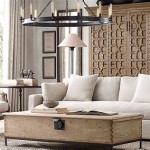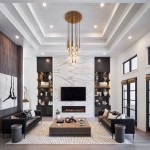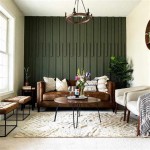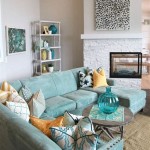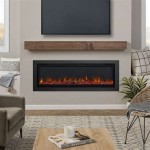Indoor Benches for Living Room: A Comprehensive Guide
Indoor benches, once relegated to entryways and hallways, have become increasingly popular design elements in living rooms. They offer a versatile seating option, complementing sofas and armchairs while adding style and functionality to the space. Choosing the right indoor bench requires careful consideration of various factors to ensure it harmonizes with the existing decor and serves its intended purpose effectively.
This article explores the different types of indoor benches suitable for living rooms, the materials they are crafted from, the styles they embody, and the practical considerations for selecting the optimal bench for specific needs and aesthetics. It also delves into the ways benches can enhance the functionality and visual appeal of a living room, providing insights for both interior design enthusiasts and those seeking practical seating solutions.
Types of Indoor Benches
The variety of indoor benches available can be categorized based on their construction, design, and intended use. Each type offers unique features and benefits, making them suitable for different living room styles and functional requirements.
Upholstered Benches: These benches are covered in fabric, leather, or synthetic materials, providing a comfortable seating experience. Upholstery adds texture and color to the living room, allowing for seamless integration with existing furniture or creating a striking contrast. Upholstered benches are available in various designs, ranging from simple, minimalist styles to ornate, tufted options. The choice of fabric impacts the bench's durability, maintenance requirements, and overall aesthetic. For high-traffic areas, durable fabrics like microfiber or leather are recommended, while luxurious fabrics like velvet or linen are suitable for more formal settings.
Wooden Benches: Wooden benches offer a timeless and classic appeal, complementing various living room styles, from rustic to modern. The type of wood used significantly impacts the bench's appearance and durability. Hardwoods like oak, maple, and walnut are known for their strength and longevity, while softwoods like pine and cedar offer a more affordable option. Wooden benches can be left natural, stained, or painted to match the existing decor. The design of a wooden bench can range from simple, straight lines to intricate carvings and details. Some wooden benches also incorporate storage options, such as drawers or shelves, adding functionality to the piece.
Storage Benches: Functionality is a key consideration for many homeowners, and storage benches address this need by providing seating and storage space in one unit. Storage benches are particularly useful in smaller living rooms where maximizing space is essential. They can be used to store blankets, pillows, toys, books, or other items, helping to keep the living room organized and clutter-free. Storage benches can be upholstered, wooden, or a combination of both. The storage compartment can be a lift-up seat, drawers, or open shelving, depending on the design and functionality requirements.
Backless Benches: Backless benches offer a minimalist and versatile seating option. Their simple design allows them to blend seamlessly into various living room styles. Backless benches are particularly suitable for smaller spaces, as they do not obstruct the view and create a sense of openness. They can be placed against a wall, under a window, or in the center of the room as a standalone seating option. Backless benches can be upholstered, wooden, or made from other materials like metal or concrete, offering a wide range of design possibilities.
Materials and Construction
The materials used in the construction of an indoor bench significantly impact its durability, appearance, and overall quality. Selecting the appropriate materials ensures that the bench can withstand regular use and maintain its aesthetic appeal for years to come.
Wood: As previously mentioned, wood is a popular choice for benches due to its durability, versatility, and natural beauty. Hardwoods like oak, maple, and walnut are known for their strength and resistance to wear and tear. Softwoods like pine and cedar are more affordable but may require more maintenance. The finish applied to the wood also affects its durability and appearance. Staining and sealing protect the wood from moisture and scratches, while painting offers a wider range of color options. Solid wood benches are generally more durable than those made from engineered wood, but engineered wood can be a more cost-effective option.
Metal: Metal benches offer a sleek and modern aesthetic. They are typically made from steel, iron, or aluminum, providing a durable and sturdy seating option. Metal benches can be powder-coated to prevent rust and corrosion, ensuring their longevity. The design of metal benches can range from simple, minimalist styles to more intricate, decorative options. Metal benches can be combined with other materials, such as wood or upholstery, to create a unique and visually appealing piece.
Upholstery Fabrics: The choice of upholstery fabric impacts the bench's comfort, appearance, and maintenance requirements. Fabrics like leather, velvet, and linen offer a luxurious look and feel but may require more care and cleaning. Durable fabrics like microfiber and synthetic blends are more resistant to stains and wear and tear, making them suitable for high-traffic areas. The color and pattern of the upholstery fabric should complement the existing decor of the living room. Consider factors like texture, durability, and ease of cleaning when selecting an upholstery fabric.
Cushioning and Padding: The cushioning and padding of an upholstered bench contribute to its comfort and support. Foam, feathers, and down are common materials used for cushioning. Foam provides firm support and is relatively inexpensive, while feathers and down offer a softer and more luxurious feel. The density of the foam affects its firmness and durability. High-density foam is more resistant to compression and will retain its shape longer than low-density foam. Consider the level of comfort and support required when selecting the cushioning material.
Styles and Design Considerations
The style of an indoor bench should complement the overall aesthetic of the living room. Choosing a bench that harmonizes with the existing furniture and decor creates a cohesive and visually appealing space.
Modern and Contemporary: Modern and contemporary benches typically feature clean lines, simple shapes, and minimalist designs. They often incorporate materials like metal, glass, and sleek upholstery fabrics. Neutral colors, such as white, gray, and black, are common in modern and contemporary benches. These benches often prioritize functionality and simplicity, making them suitable for minimalist or contemporary living rooms.
Traditional: Traditional benches often feature ornate details, intricate carvings, and classic upholstery fabrics like velvet, brocade, and damask. Dark wood finishes and rich colors, such as burgundy, gold, and emerald green, are common in traditional benches. These benches evoke a sense of elegance and sophistication, making them suitable for formal living rooms or those with a classic aesthetic.
Rustic and Farmhouse: Rustic and farmhouse benches typically feature natural materials, such as wood, leather, and burlap. Distressed finishes, exposed hardware, and simple designs are common in rustic and farmhouse benches. These benches evoke a sense of warmth and authenticity, making them suitable for country-style or farmhouse living rooms. The use of reclaimed wood and natural textures adds to the rustic charm of these benches.
Bohemian: Bohemian benches often feature vibrant colors, eclectic patterns, and unconventional designs. They may incorporate materials like rattan, wicker, and macrame. Bohemian benches evoke a sense of creativity and individuality, making them suitable for eclectic or bohemian living rooms. The use of bold colors, textures, and patterns adds to the unique and artistic appeal of these benches.
Size and Placement: The size of the bench should be proportionate to the size of the living room and the surrounding furniture. A large bench in a small living room can overwhelm the space, while a small bench in a large living room may look insignificant. Consider the available space and the intended use of the bench when determining its size. The placement of the bench is also important. It can be placed against a wall, under a window, or in the center of the room as a standalone seating option. Consider traffic flow and accessibility when determining the optimal placement for the bench.
Color and Texture: The color and texture of the bench should complement the existing color palette and textures in the living room. Consider the color of the walls, flooring, and other furniture when selecting a bench. A bench with a contrasting color or texture can add visual interest to the room, while a bench that matches the existing decor can create a cohesive and harmonious space. The texture of the upholstery fabric and the finish of the wood or metal can also contribute to the overall aesthetic of the room.
Functionality: The intended use of the bench should also be considered when selecting a style. If the bench is primarily intended for seating, comfort and support should be prioritized. If the bench is intended for storage, the size and accessibility of the storage compartment should be considered. If the bench is intended as a decorative element, its aesthetic appeal should be prioritized. Consider the specific functional requirements when selecting a style.
By carefully considering the type of bench, the materials used in its construction, and the style that best complements the living room's aesthetic, individuals can select the perfect indoor bench to enhance both the functionality and visual appeal of their living space. Thoughtful selection ensures a bench becomes a valued and integrated element of the living room environment.

Byblight Black Entryway Bench Dinning 47 24 In Modern Shoe Indoor Bedroom W Heavy Duty Legs For Living Room Bb Ys0291hy
:strip_icc()/cdn.cliqueinc.com__cache__posts__262777__best-indoor-benches-262777-1531348932598-image.700x0c-2b386a5275304834b4bf5f01373eec23.jpg?strip=all)
7 Beautiful Indoor Benches And How To Style Them

Benches Ottomans Stylish Seating By West Elm

Andeworld Upholstered Ottoman Bench Seat With Gold Legs Sitting Living Room For Bedroom Indoor Benches White

Andeworld Upholstered Ottoman Bench Seat With Gold Legs Sitting Living Room For Bedroom Indoor Benches Beige

Three Great Places To Use Benches In Your Home

Unusual Indoor Benches 25 Unique Wooden Designs

Benches Homepop Furniture

Indoor Long Shaped Ottoman Linen Fabric Upholstered Bench Front Door Shoe Storage Entryway With Wooden Legs Cuddlewood

Shop Upholstered Modern Accent Bench Seafoam Benches Casaone

